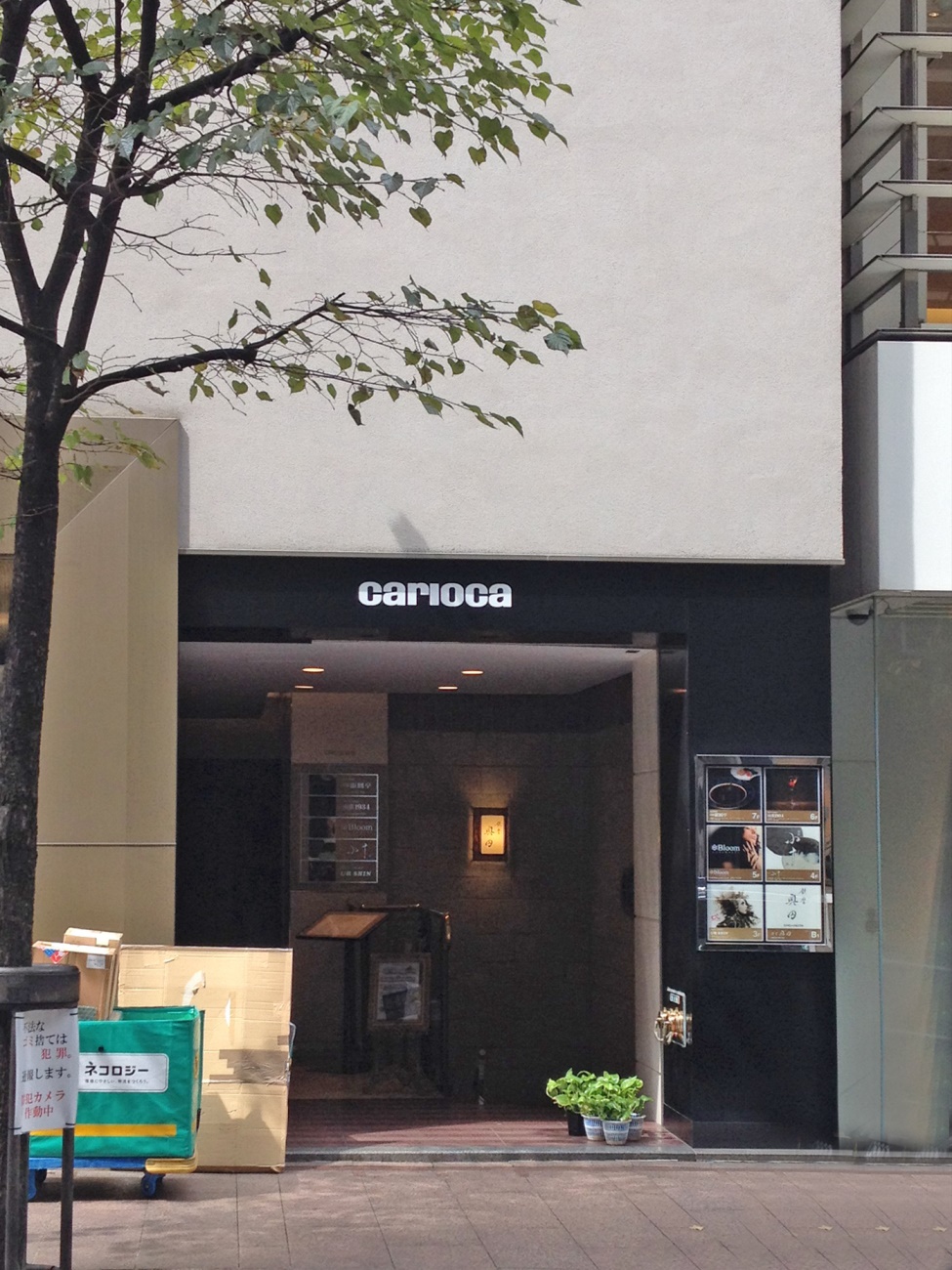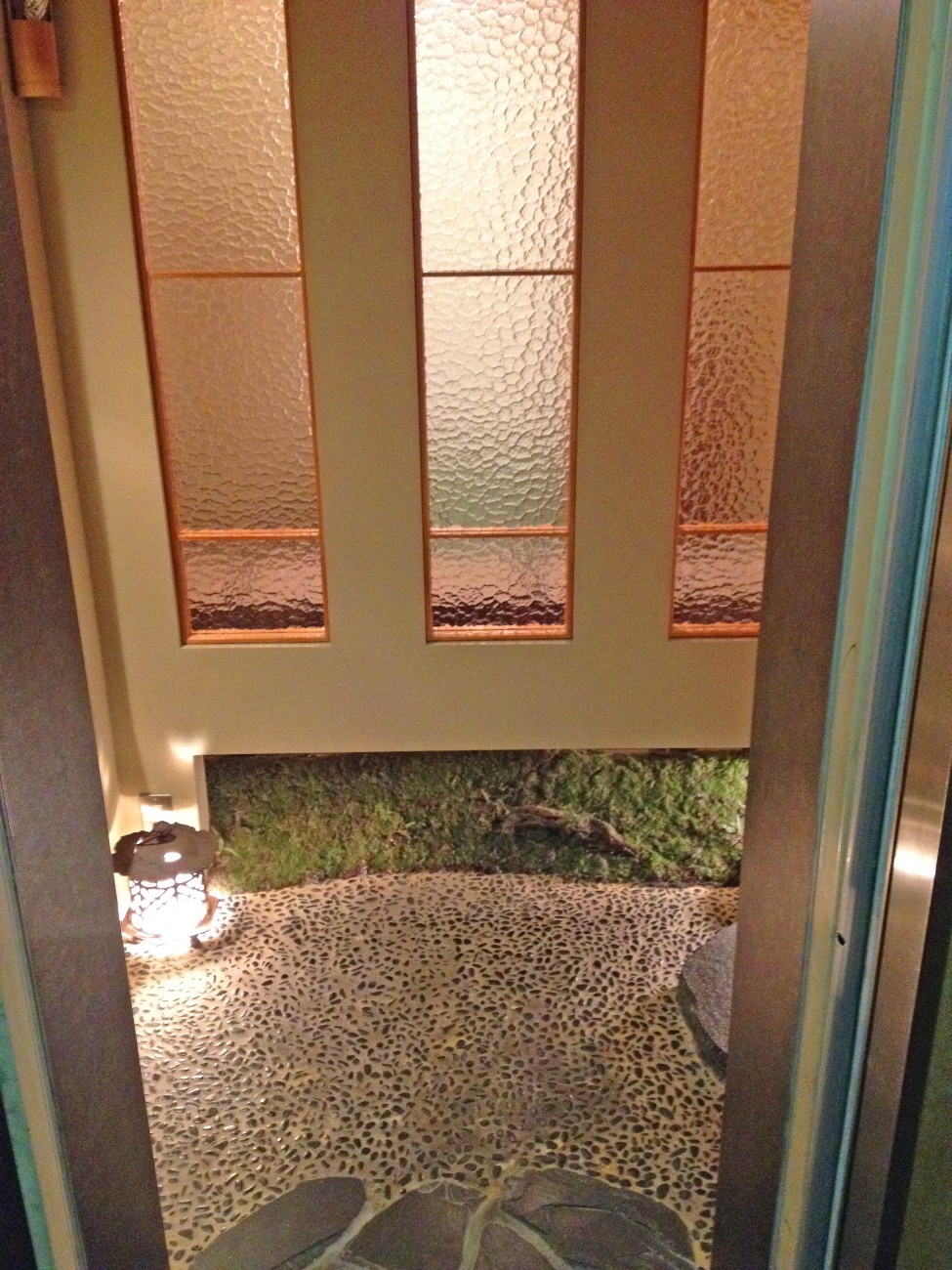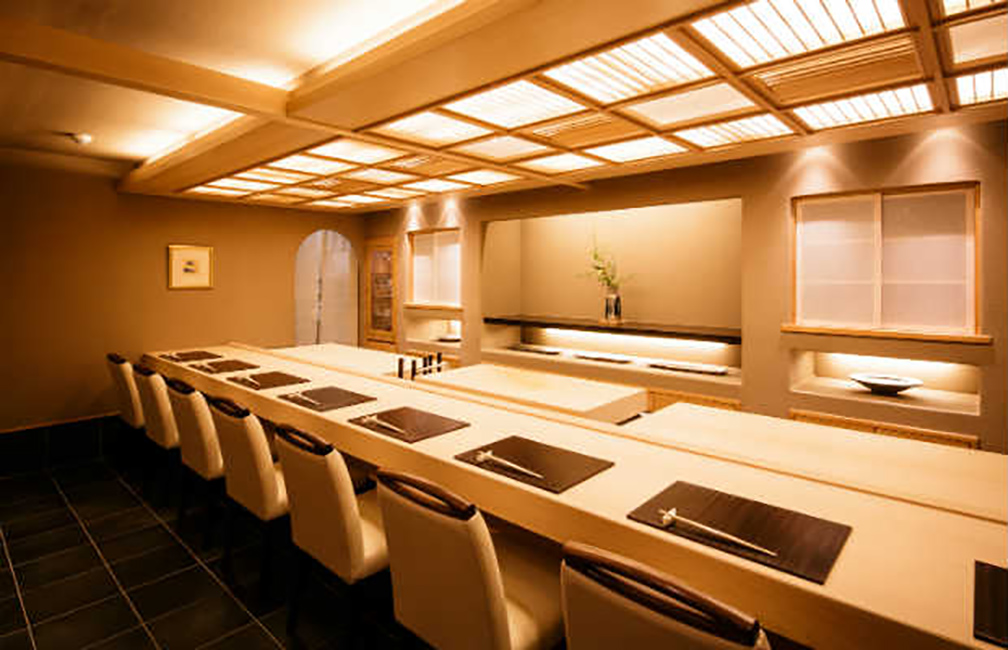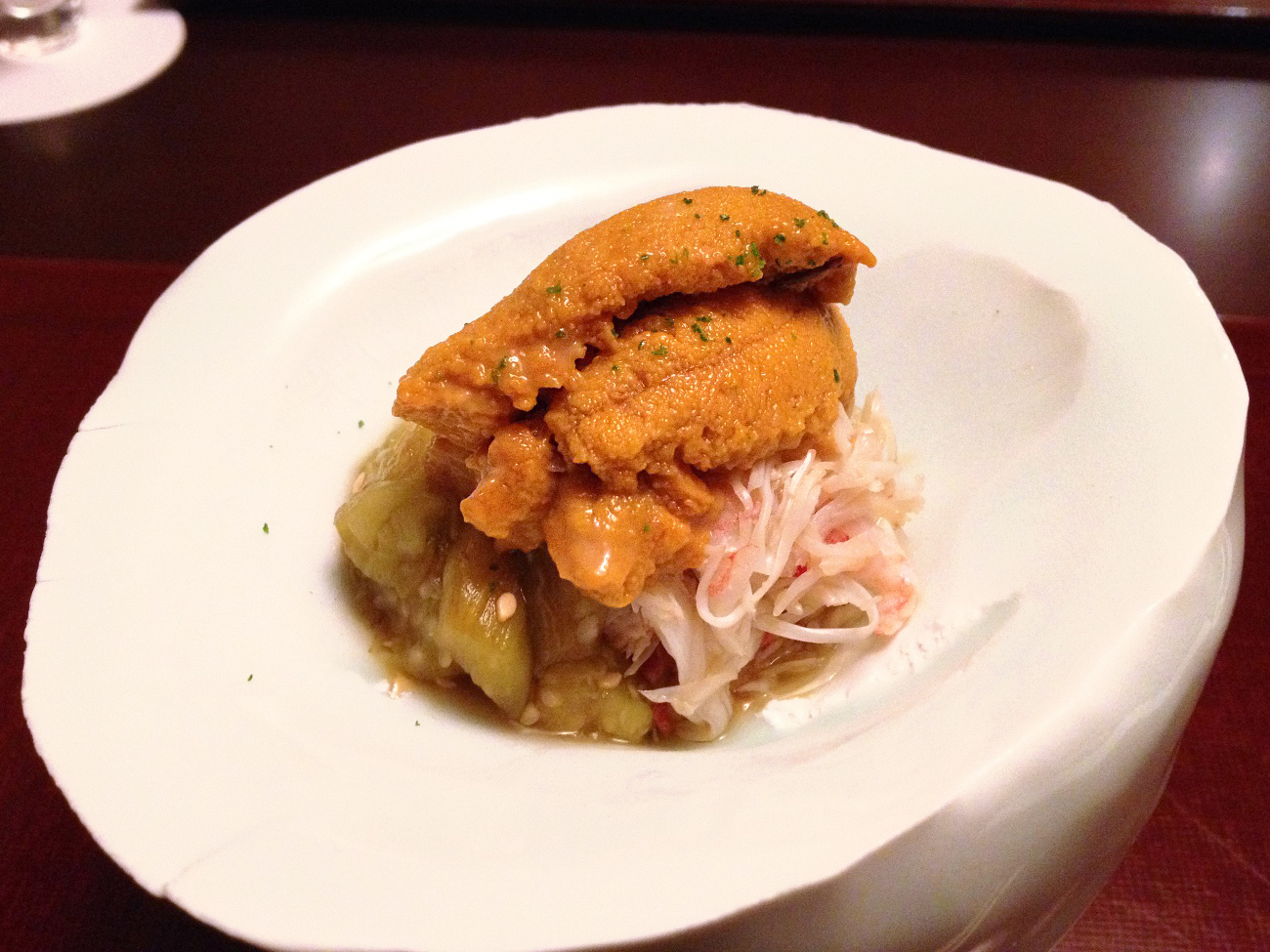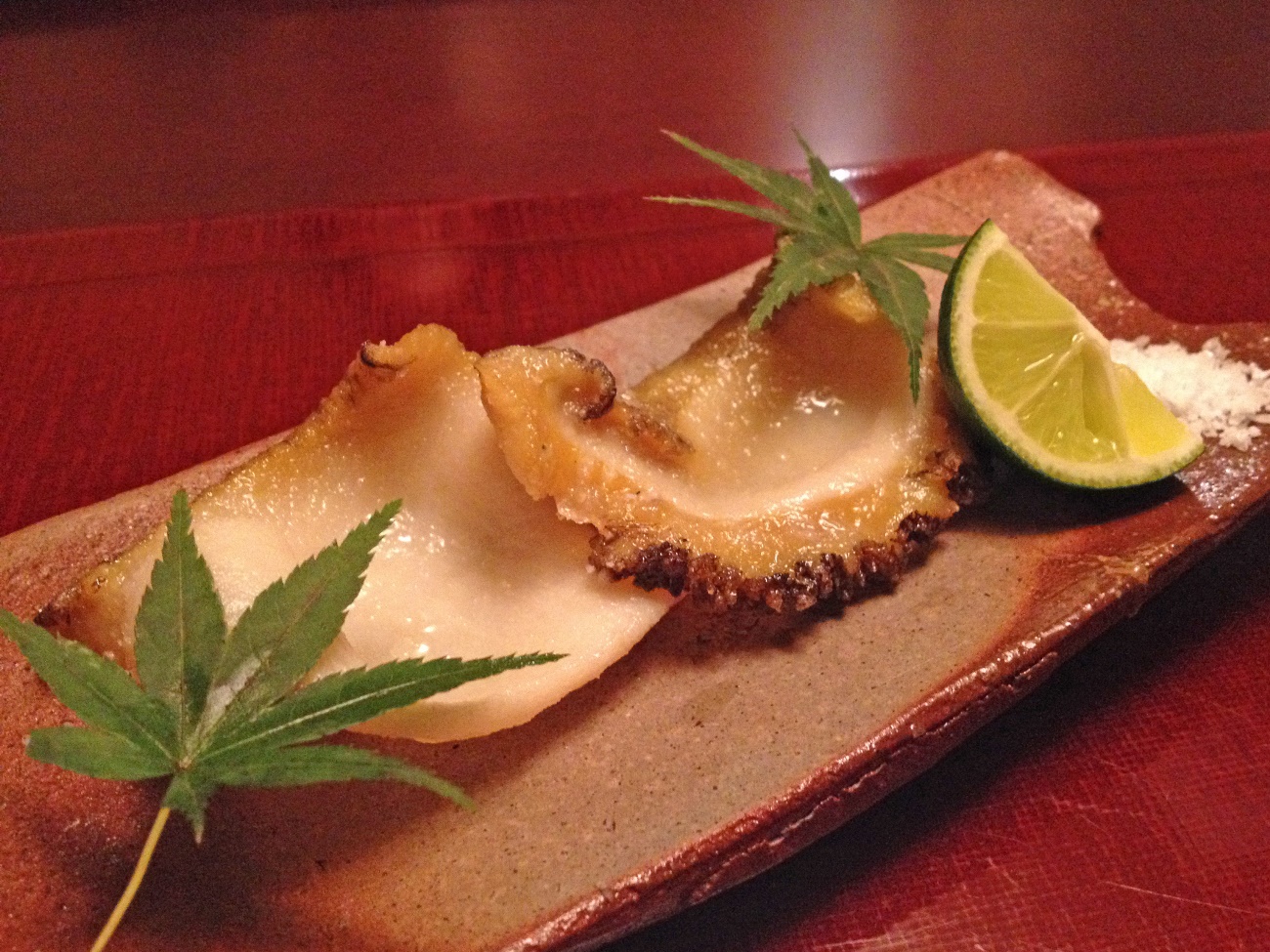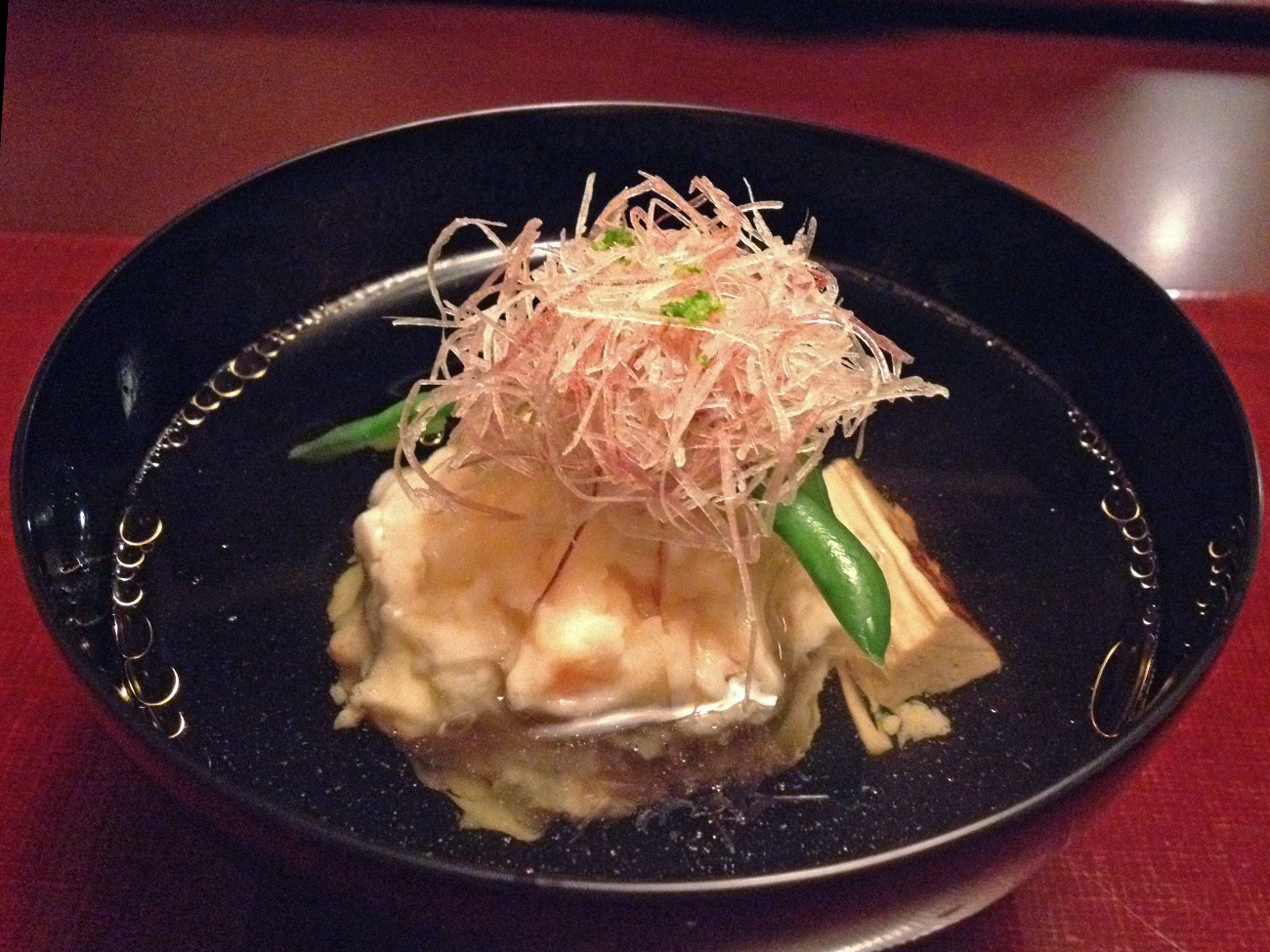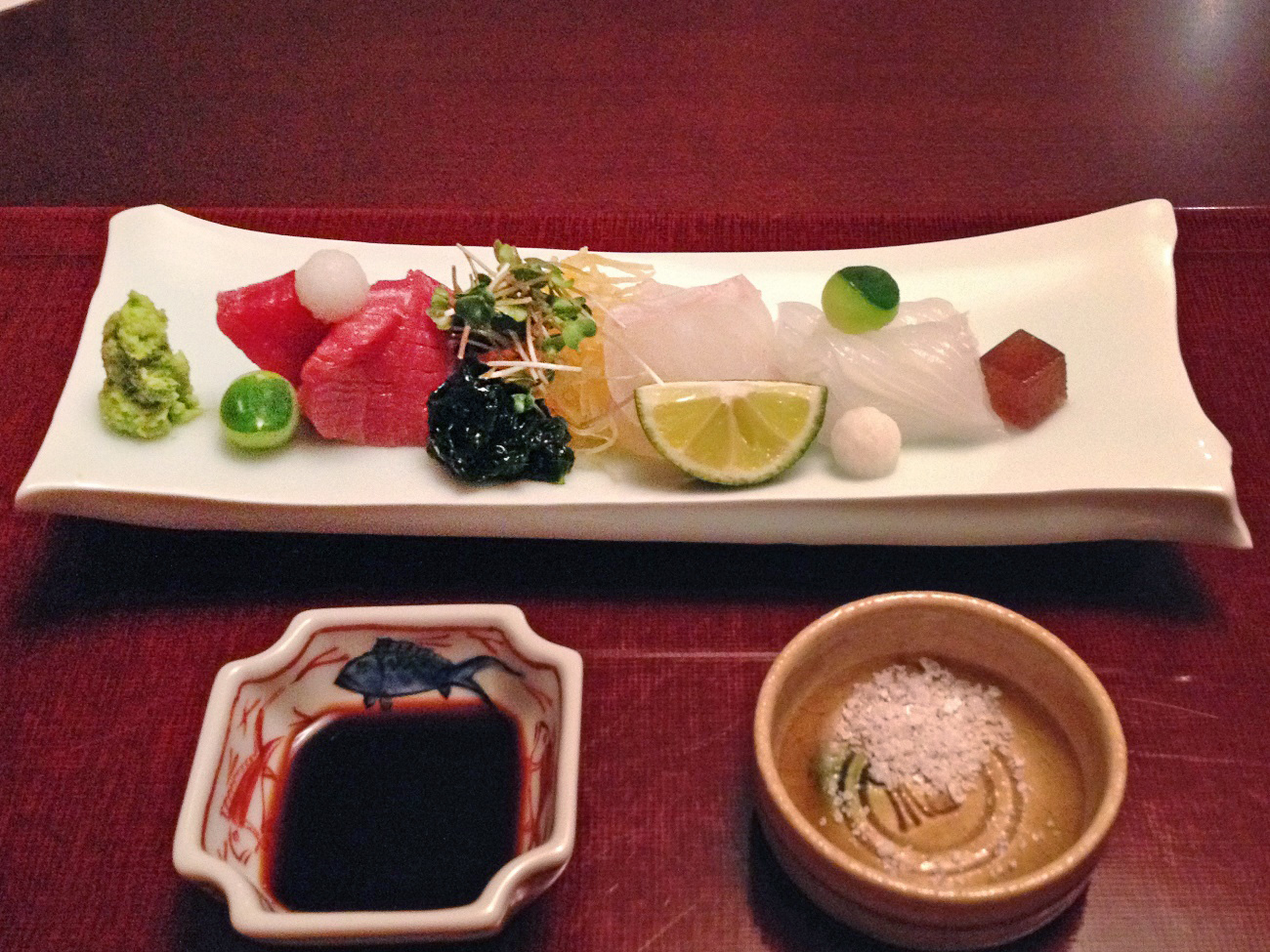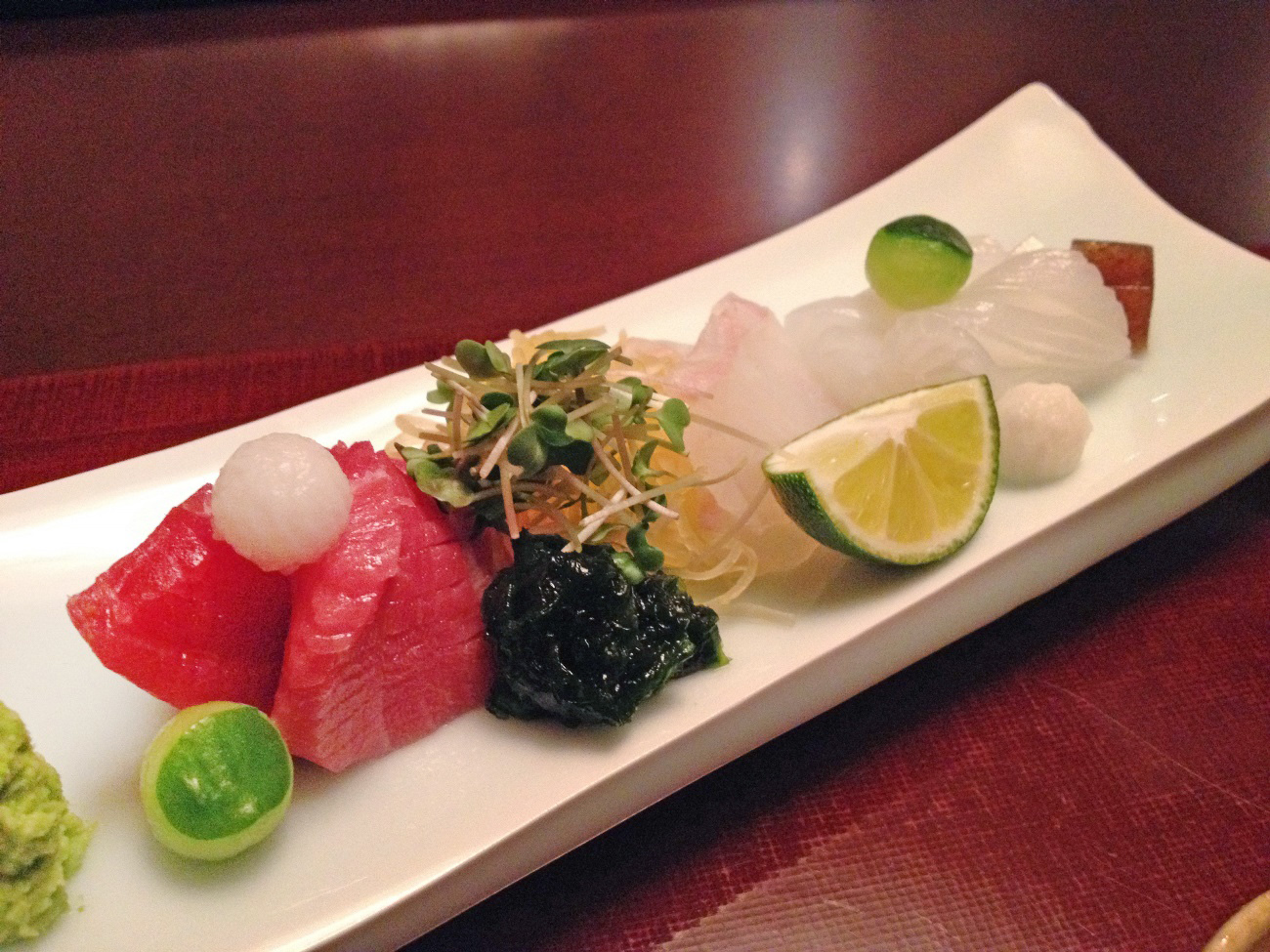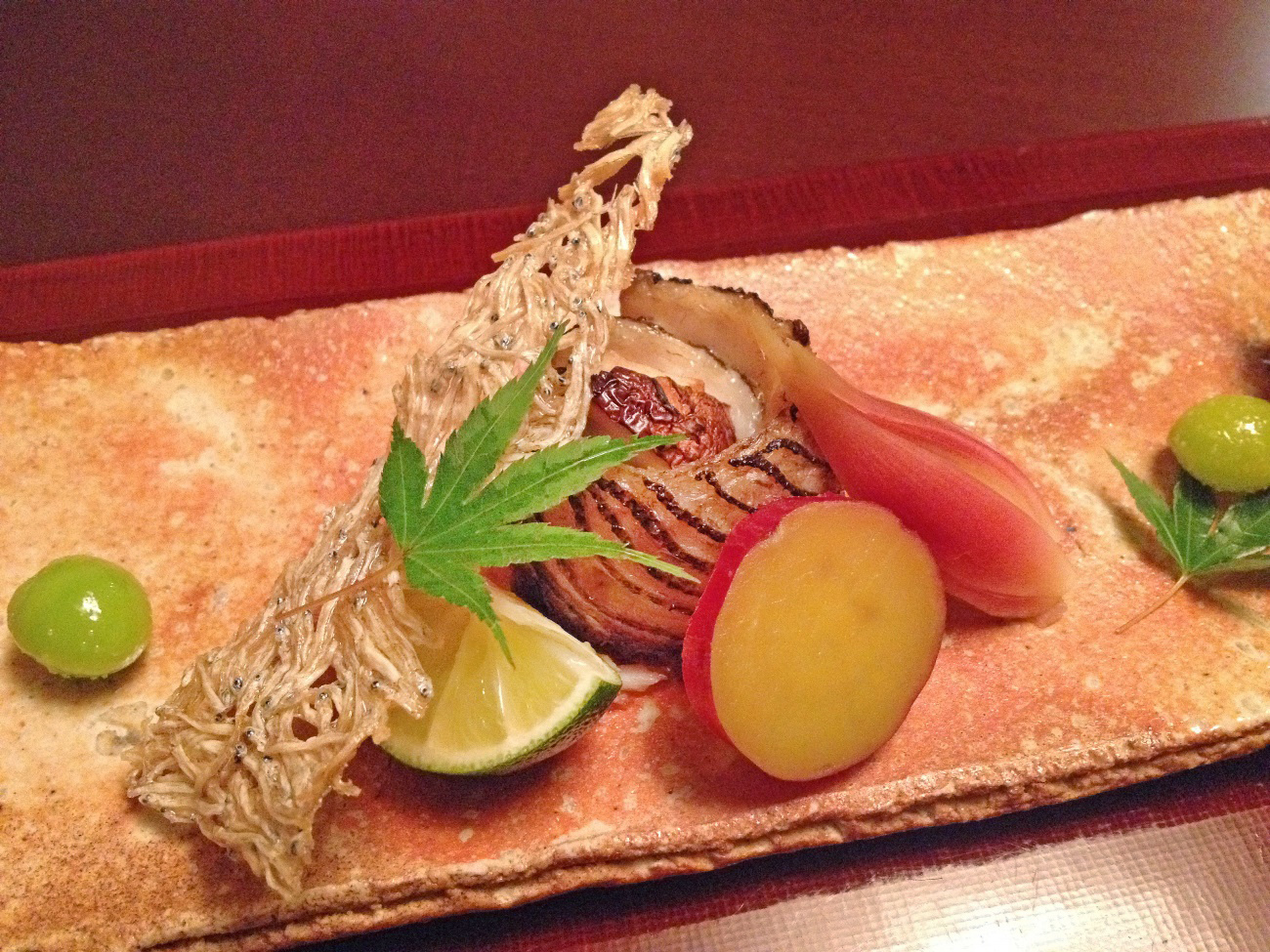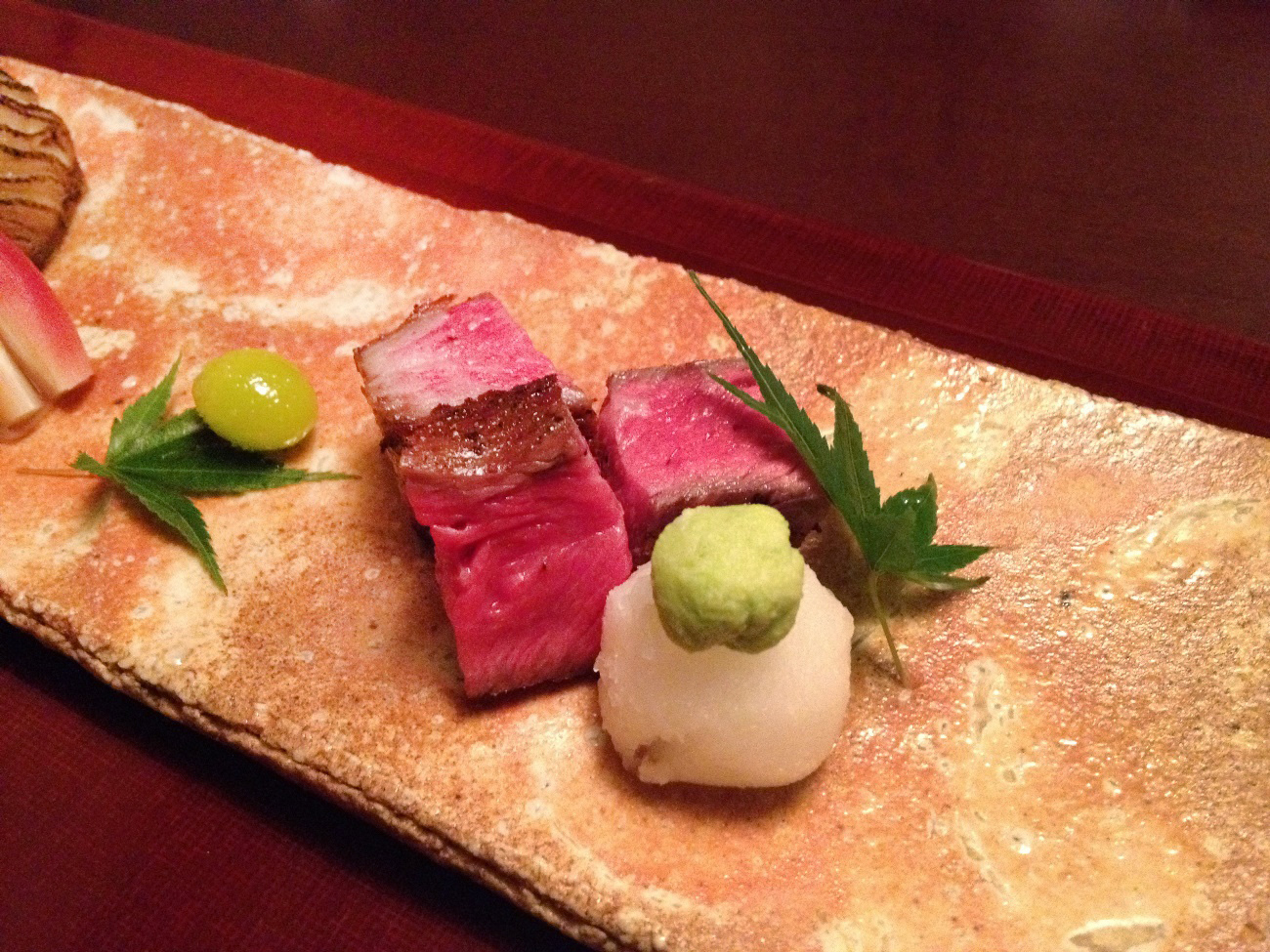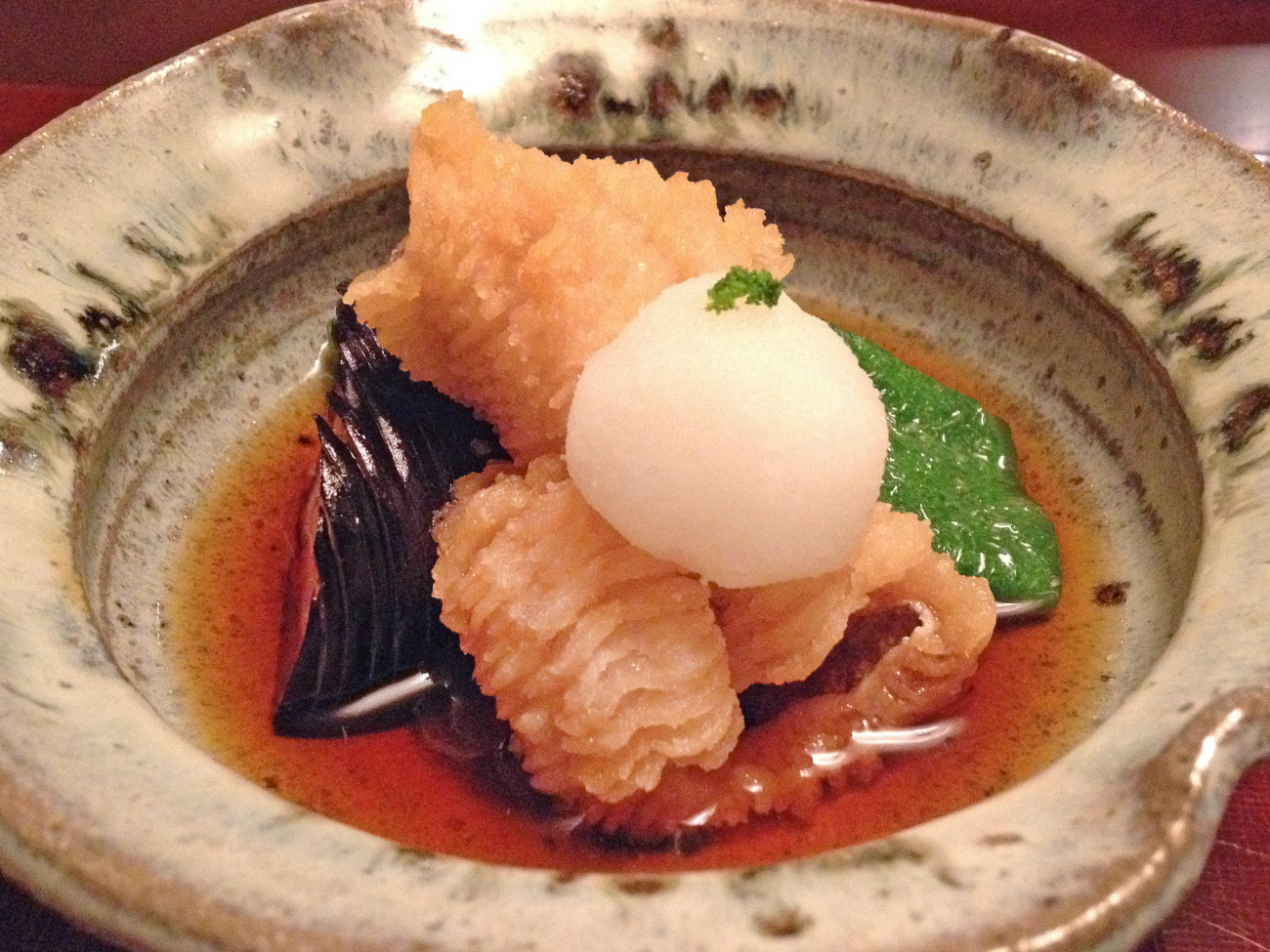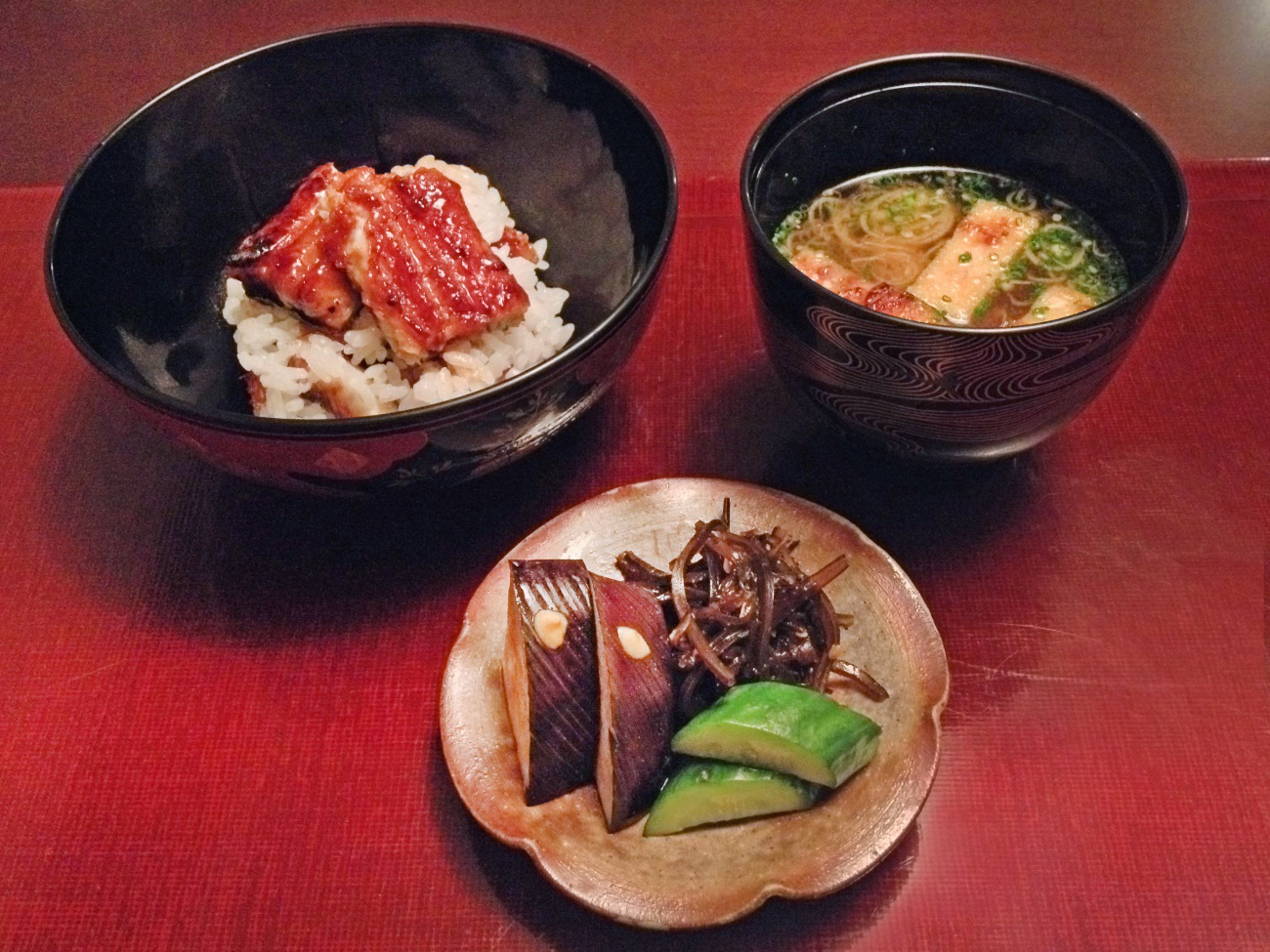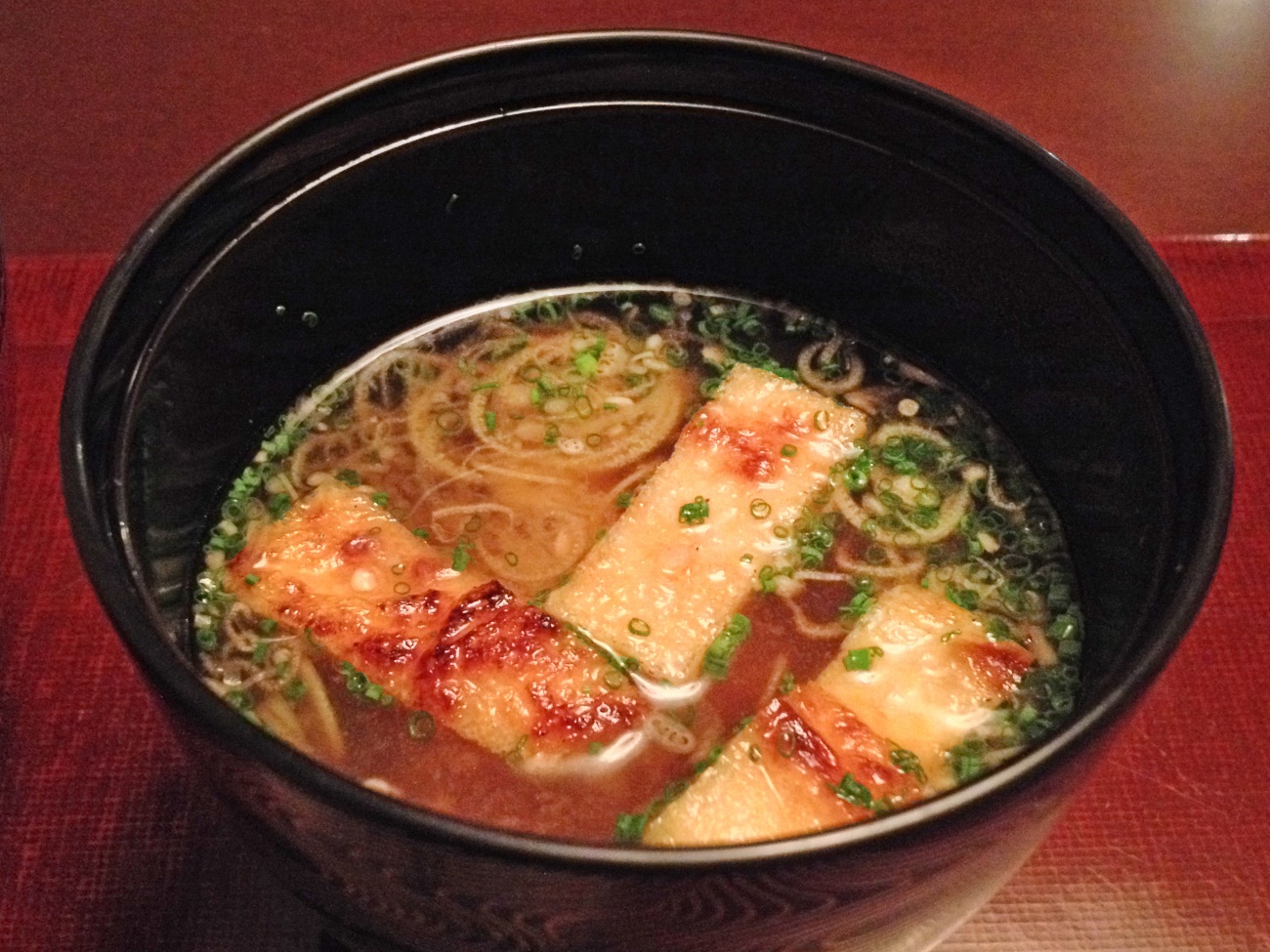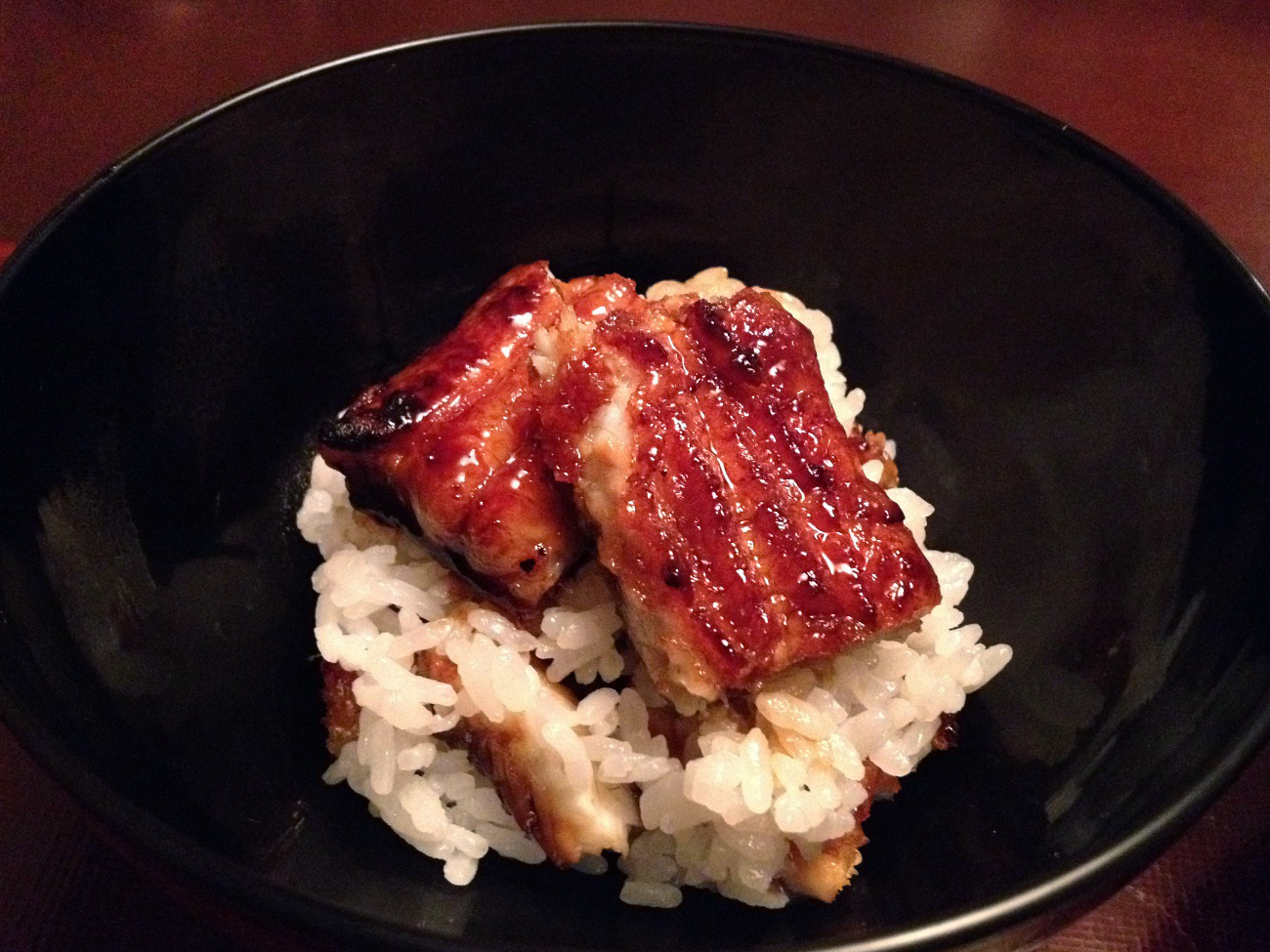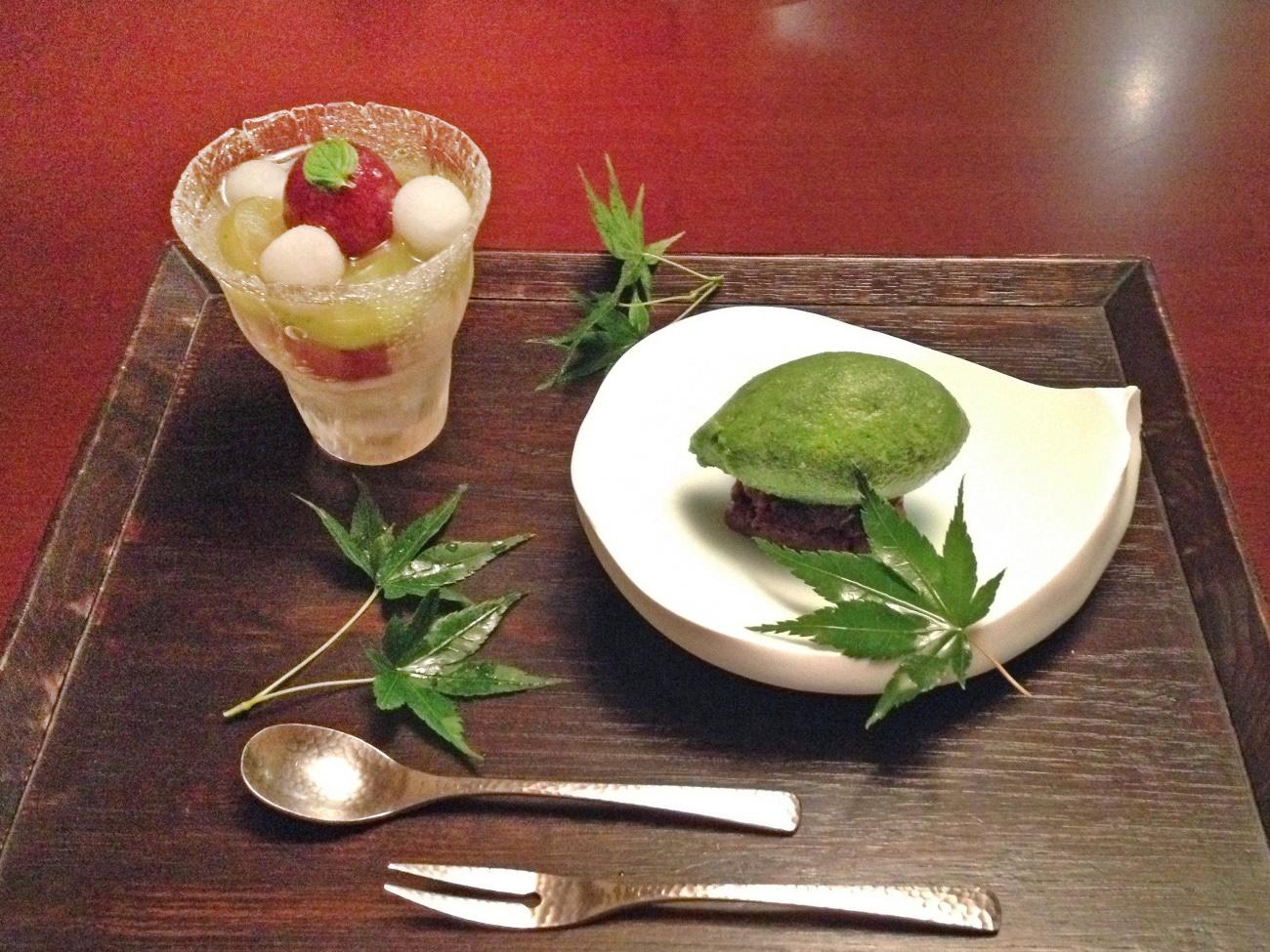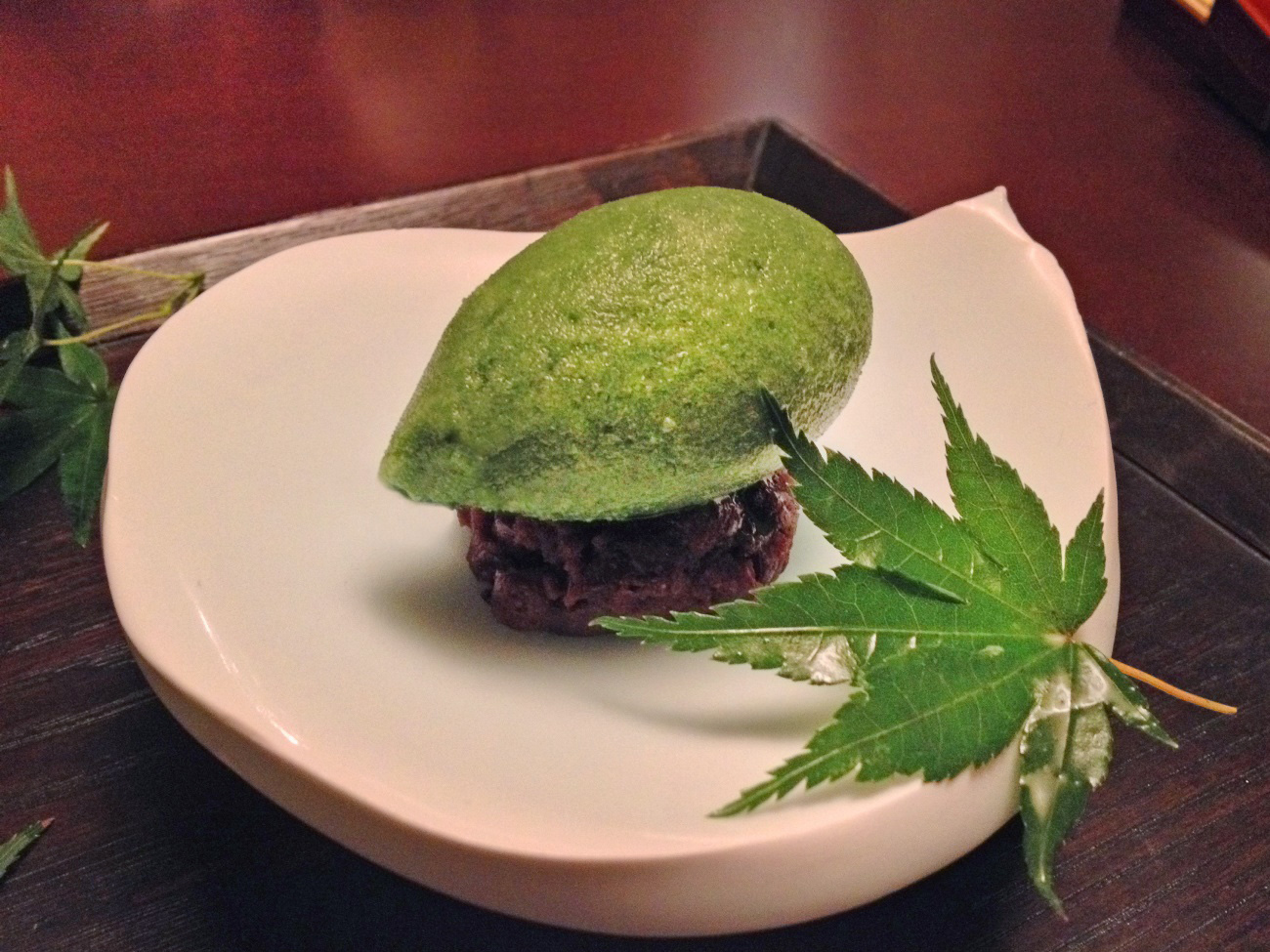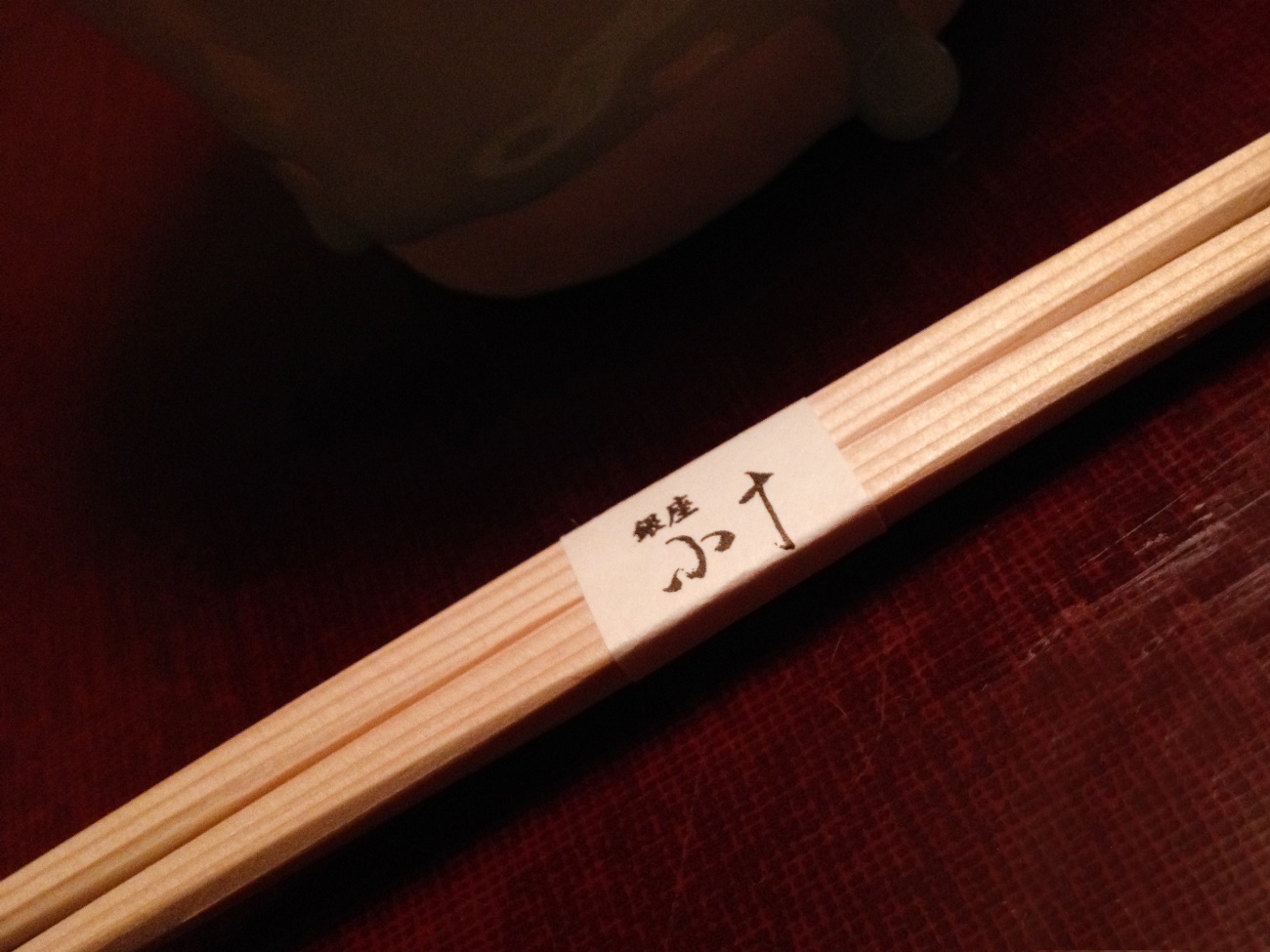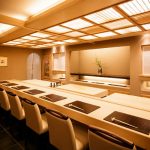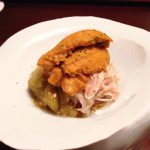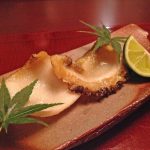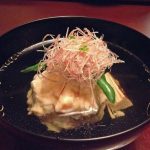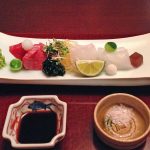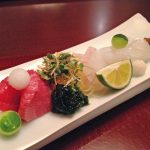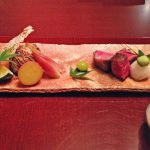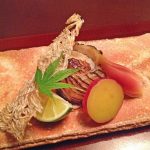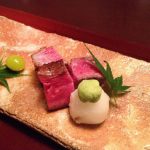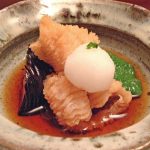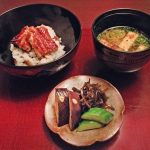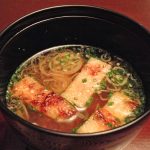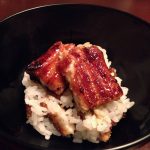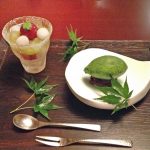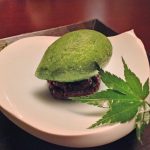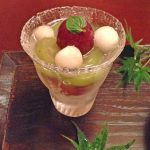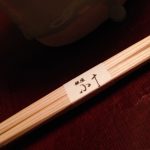CLICK ON THE MAIN PHOTO ABOVE TO VIEW CAPTIONS IN GALLERY FORMAT
Image 1: First, I have a small confession to make. A few years back, I booked a table here but I’d had a kaiseki meal the night before (another Michelin 3-star restaurant). Realising at the last moment this restaurant is also kaiseki (a cuisine that’s based on similar seasonal ingredients), so I called to cancel as they hadn’t taken a credit card number (they didn’t, in those days). They asked me to reimburse them, and I refused. They were pretty upset about this, and the incident ended with my hanging up the phone. So – not a great start, but I doubt that they remember. Hope not!
Image 2: Anyway, here I am, back again after almost 7 years. Although the address turned out to be an anonymous office block in Tokyo, I wasn’t concerned. I’d enough experience of dining in Japan to know that many restaurants have pretty humble premises like this. Mind you, I was glad that I can read Kanji, so I was able to work out from the directory that Koju is on the 4th floor!
Image 3: Tokyo is famously cramped - and even the lift is tiny here. But, when the door opened to the 4th floor, it was like entering the TARDIS – it became a completely different world!
Image 4: These counter seats are the main dining area, though there’s a small private room at the back (which is intended to take 4 diners, but they often pack 6 in). And that's the whole restaurant. Not spacious, for sure, but they’ve squeezed the most out of it, managing to transform a small office space into a traditional wood-dominated dining environment. It’s worth noting that, with small places like this, you need to make a reservation. And if you want to be sure of a booking, make it at least a month in advance. Incidentally, if you need to cancel, I don’t recommend my own approach (leaving it to the last minute)!
Image 5: We’d pre-ordered the lunch menu and, after a sip of sake, the first dish arrived. Look at this generous potion of sea urchin! Loving it, already! Plus, there were snow crabs, that had arrived from Hokkaido just that morning, hidden underneath, with baby eggplant and yam. Though having quite a mild flavour, the sea urchin was extremely creamy and pure-tasting, without any trace of a bitter aftertaste. The snow crab must be the freshest available in Tokyo. Magnificent ingredients!
Image 6: Next came two large slices of chargrilled abalone - tender, smoky and lightly seasoned, with the perfect amount of salt. This is what Japanese food is all about – careful preparation, using the freshest ingredients available. There’s no need to be overly complex - simply let the beautiful ingredients speak for themselves.
Image 7: The soup course came with a jumbo egg and prawn dumpling in dashi, along with shitake mushroom and pepper. This was the best course of the meal - in particular the dumpling. This was delicious - not only because of the prawn, but because the egg had such a beautifully creamy and intense flavour! The broth was good, too – subtle, with a nice taste of umami. Basically, it was all very warm and eggy... food with a very comfortable feeling to it.
Image 8: And now we moved on to sashimi, which came with soy sauce and sea salt, decorated with yam, pear, and cucumber balls.
Image 9: Akami is the lean back cut of tuna, which is often used to judge the quality of the fish. The otoro - the fatty tuna belly – was ultra-soft, melting in my mouth with a burst of freshness, and without even a hint on an unpleasant fishy smell. The squid maintained this great standard, being very tender and creamy. The only part of the dish that wasn’t delicious was the halibut, which was rather tough and flavourless.
Image 10: An appealing plate of fish and meat.
Image 11: In the centre here is grilled barracuda, wrapped with shitake mushroom and garnished with Japanese ginger, ginkgo nuts, and a crisp made with lots of tiny fish. I’m afraid it was much too dry to be among my favourite dishes of the meal.
Image 12: Wagyu beef from Miyazaki, seared on both sides, and served with wasabi with a ball of grated raddish. The meat was certainly soft and flavoursome - but three small cubes simply weren’t enough!
Image 13: And now the deep fried course. It’s pike eel with eggplant and pepper, served on a light soy broth with grated raddish. The batter was thin and crispy, and the eel nice and creamy. Beautifully done.
Image 14: Finally the main rice course. This came with…
Image 15: … miso soup with fried tofu skin.
Image 16: The course itself was unagi (freshwater eel) on rice, which contained lots of embedded pieces of eel. The eel had been grilled to perfection, so that the thin and crispy skin contrasted with the creamy flesh, while the glazed kabayaki sauce had a precisely balanced mix of savouriness and sweetness. Wonderful food – but, once again, only very small portions!
Image 17: I was still hungry when dessert arrived!
Image 18: I particularly enjoy dessert in Japan, as it’s usually light and refreshing – in contrast to French cuisine which often features heavy and creamy desserts. I’ve had lots of matcha ice cream, but it was my first experience of matcha sorbet. It’s (intentionally) very icy, as there's no cream at all, and all of its sweetness came from the small stack of red beans at the bottom. Very healthy!
Image 19: The dessert also came with a glass of jello, filled with muscat grapes and pear balls, and topped with Japanese hawthorn berry. A refreshing, fruity and light finish to a 3-hour lunch.
Image 20: Overall, I was a bit disappointed. There was no doubting the superb quality of the ingredients, and the egg dumpling was superb, as was the eel on rice. But the toughness of the halibut sashimi, the dryness of the barracuda, and the small portions all let the side down. You don’t – and shouldn’t –expect this kind of thing at a restaurant of this standard. I felt like going for another meal afterwards! On a brighter note, the service was attentive, and even though they had limited English, the staff did their best to explain the background of each dish to me. Oh, and one final point worth noting – there’s now a branch of Koju in Paris!
